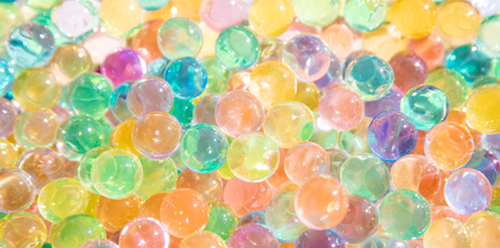A Jamming Framework for Soft Granular Materials
One outstanding challenge in the field of granular materials is to fully understand the jamming transition—the point at which a granular material flowing through a confined space becomes so tightly packed that it behaves as a solid. Physicists have investigated the dynamics of this transition theoretically and experimentally, but most studies have focused on systems made up of hard grains. Now Franco Tapia at Aix-Marseille University, France, and colleagues have performed a comprehensive series of experiments to extend the description of this transition to an aggregate of soft particles [1]. Understanding how soft granular materials flow might have implications in cancer research (see Viewpoint: Physics of Cancer Takes Shape).
The exact point when a hard granular material reaches the jamming transition depends on many factors, including how much of the volume comprises grains, the intergrain friction, the viscosity of the surrounding fluid, and the confining pressure. The jamming transition in a soft granular flow is affected by all these factors, but with an added complication: shear stress can deform soft grains such that the material can continue to flow even under conditions that would have jammed a system of hard grains.
Tapia and his colleagues used a rheometer they designed to study suspensions of soft, nearly frictionless hydrogel spheres in liquids of different viscosities. By applying varying shear forces while controlling pressure or material volume, they explored a broad range of material properties up to and beyond the jamming transition. The experiments allowed the team to obtain a general framework for soft grains as an extension of a rigid-grain framework. This extension accounted for particle softness by introducing pressure-dependent volume and friction parameters as well as effective stresses in the material.
–Marric Stephens
Marric Stephens is a Corresponding Editor for Physics Magazine based in Bristol, UK.
References
- F. Tapia et al., “Rheology of suspensions of non-Brownian soft spheres across the jamming and viscous-to-inertial transitions,” Phys. Rev. Lett. 133, 088201 (2024).




